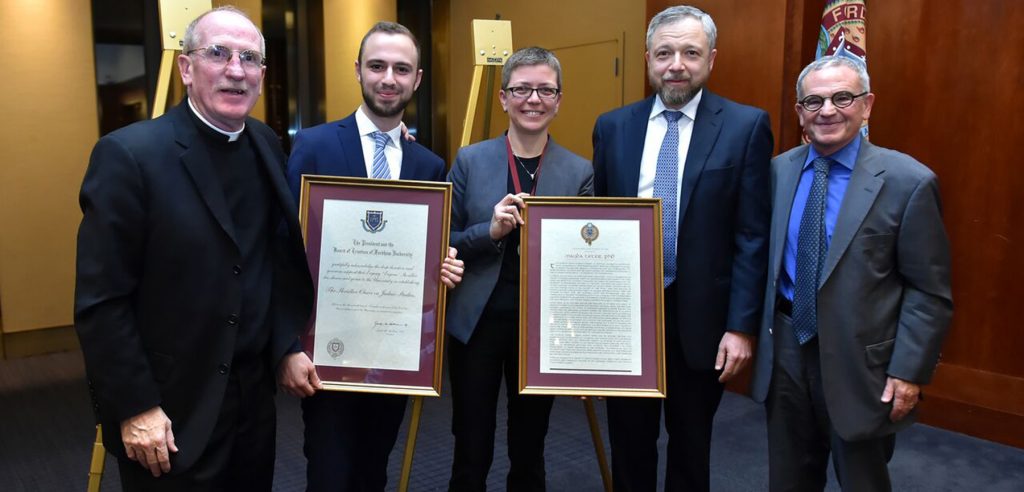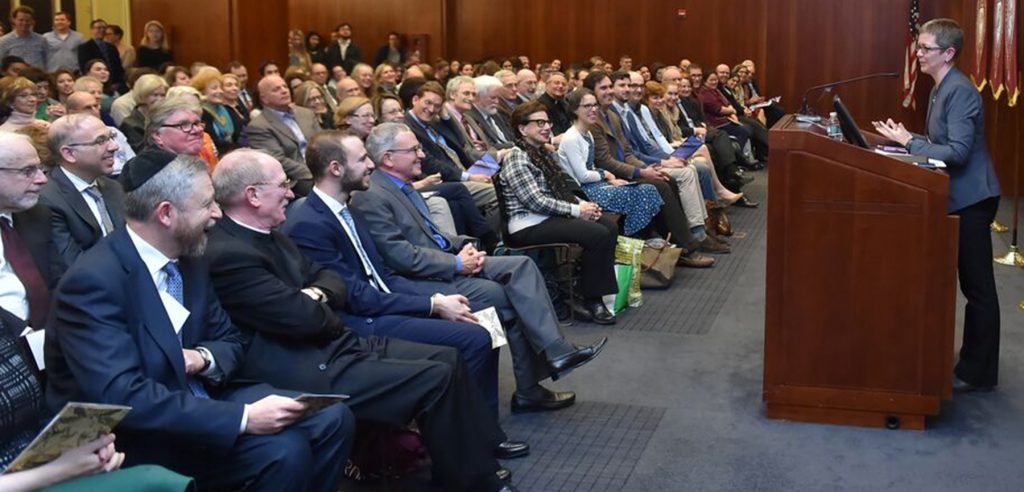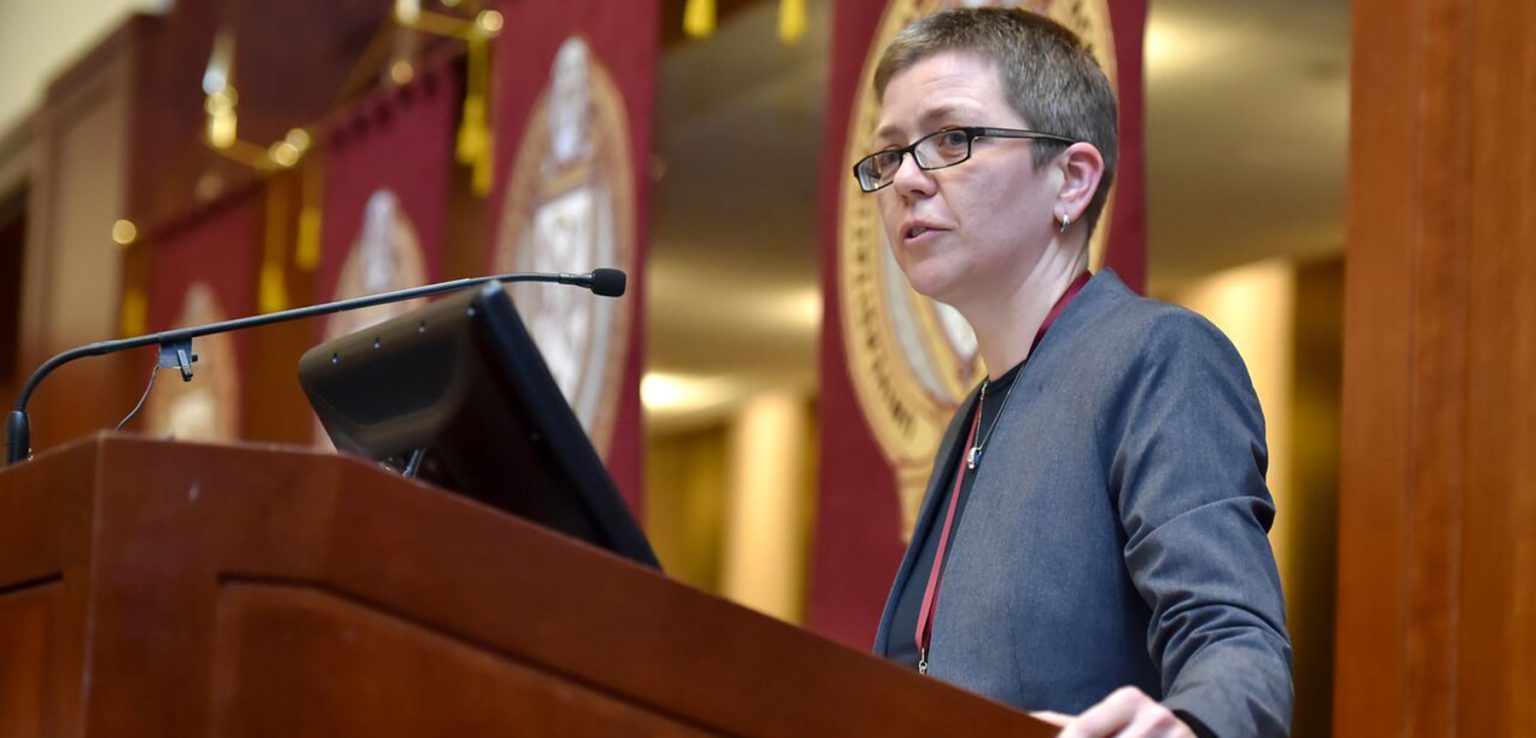If Jews were integrated into European society, culture, economy, and politics, can historians justify confining them to “Jewish history”?
The inaugural holder of Fordham’s Shvidler Chair in Judaic Studies, Magda Teter, PhD, posed the provocative question at her installation on Nov. 17.
Teter assumed the chair earlier this year with the task of building Jewish Studies at Fordham. In her lecture, “From Alienation to Integration: Rethinking Jewish History,” she proceed to blur perceived historical divisions between Jewish and non-Jewish societies and histories, arguing that the perception of their separate histories was the result of 19th-century historians efforts to promoting newly formed national identities.
Jews, in fact, were far more integrated in the pre-modern Europe than has often been portrayed, she said. The idea of Jews being alienated and only recently integrated needed to be rethought.
“The theological concept of exile played a crucial role,” she said. “It implied that Jews were sojourners and foreigners in the lands they had lived in for centuries.”

She said that in Europe, the approaches to modernity emphasized Jewish integration, and yet the Jews remained marginal in general histories of the continent. History, she said, needs to be examined on its own terms without projecting contemporary views onto it. Such a reading would lead to an understanding that Jewish and Christian societies were interdependent. In light of such overlapping histories, she said, one history cannot be understood without the other.
For example, in 16th-century Strasburg, the presence of Jews changed the dynamic of the fraught relationship between Protestants and Catholics because the two religions had to make policy together as it related to the Jews.
In 17th-century Italy, Jews and Christians met in taverns where they would “sit, drink, argue, and sing,” she said. Eating, drinking, and dancing often led to sexual encounters and long term relationships.
“This caused more than a headache for Christian authorities as well,” said Teter, adding that such revelry triggered new legislation and new Jewish laws.
 Among Jews, those enjoying the delights were not simply rebels disregarding the commandments, though they were indeed violating Jewish and Christian law.
Among Jews, those enjoying the delights were not simply rebels disregarding the commandments, though they were indeed violating Jewish and Christian law.
“Surely they disregarded commandments, defied existing laws, sometimes endangering their lives, and were indeed ‘abandoning themselves to physical pleasure,’” said Teter. “But this was because it was part of daily life—not a result of ‘freethinking behavior’ as such behavior would be interpreted later in the 18th century and beyond.”
Jews became “part of daily life” in an integrated fashion, a fact often overlooked by contemporary historians, she said. It underscores the difference between the pre-modern and modern Europe, she said, as well as much about what we know in Jews’ and Christians’ quotidian lives.
“There is no doubt that modern and pre-modern periods are different. But ‘integration’ as such can no longer be seen as ‘a basic criterion of the modern period.’ It is clear now that the traditional narrative of Jewish insularity, victimhood, and idealized piety, that was only to be shattered by modernity, no longer holds.”
In welcoming the audience to the lecture, Joseph M. McShane, SJ, president of Fordham, paused to remember the victims of weekend violence in Paris. He said the events inspired by religious differences placed the evening’s lecture in context, noting that Teter’s interfaith research is a step toward building “bridges of understanding.”
“Here at Fordham we . . . celebrate the human spirit, we seek to devote ourselves to the idea that life, not death, comes from faith in God,” he said.
“This is very important, especially in the aftermath of what happened in Paris.”


